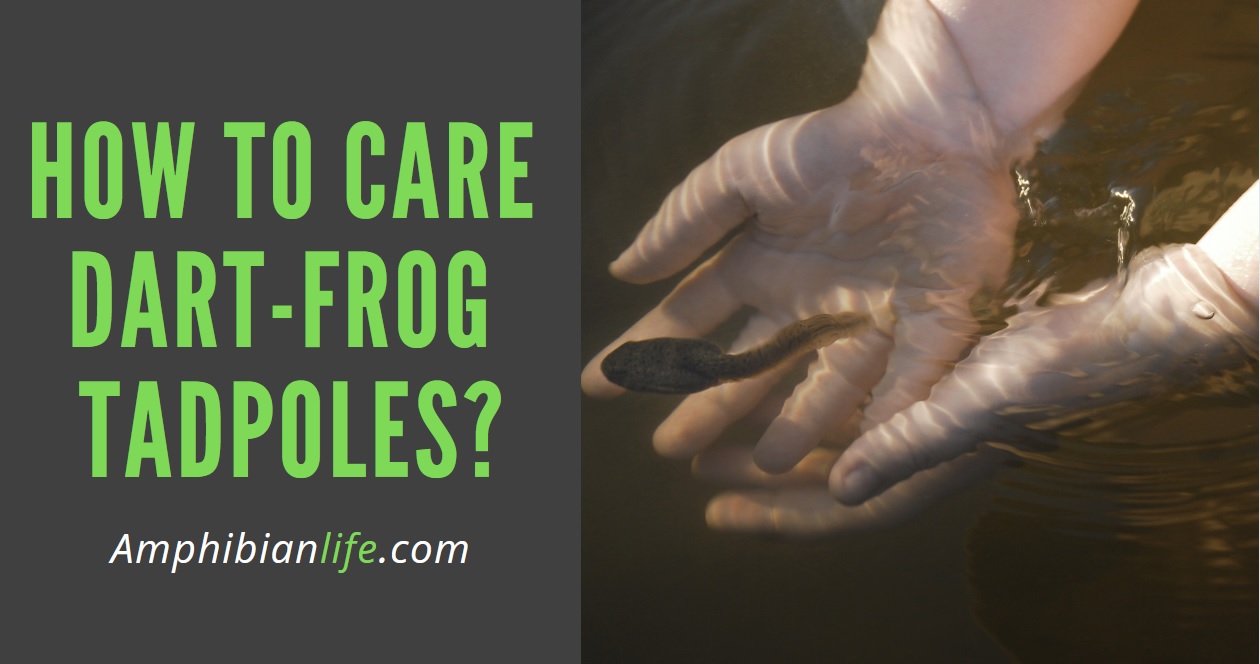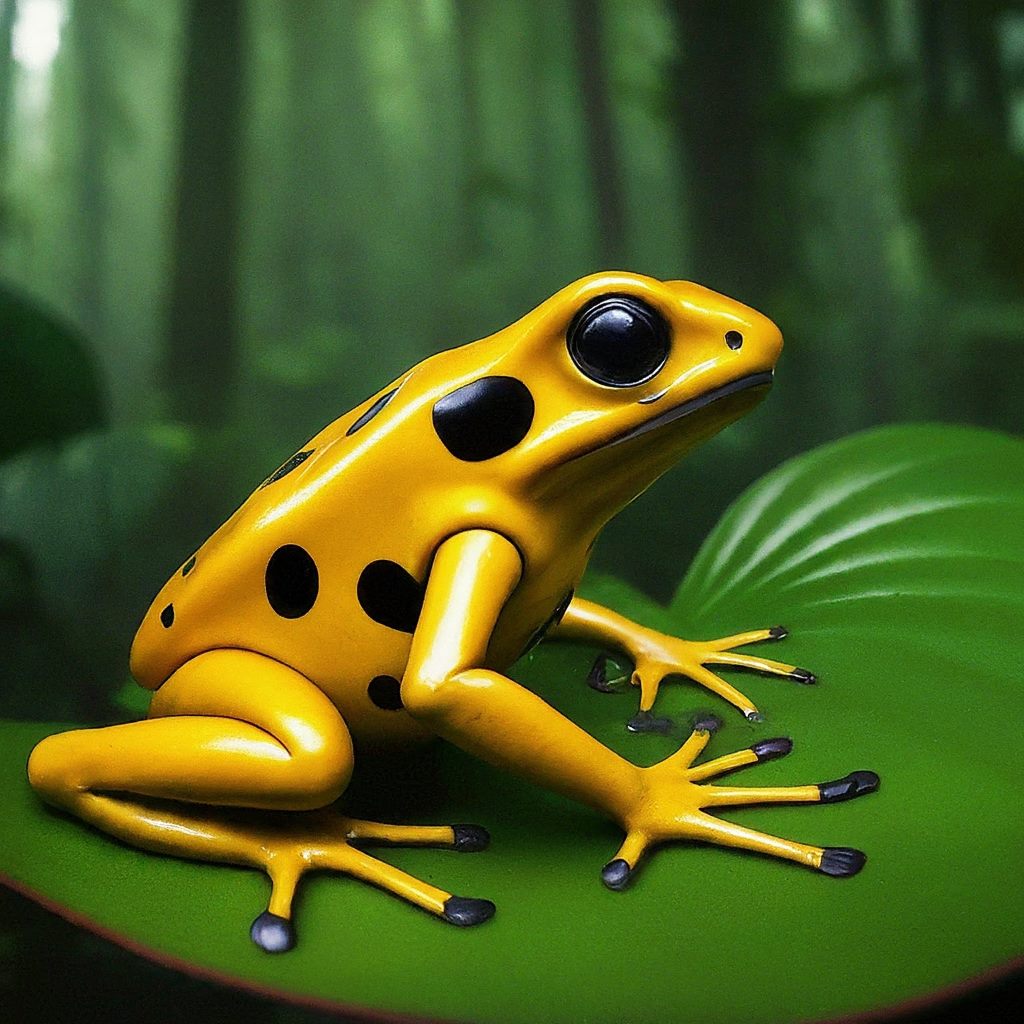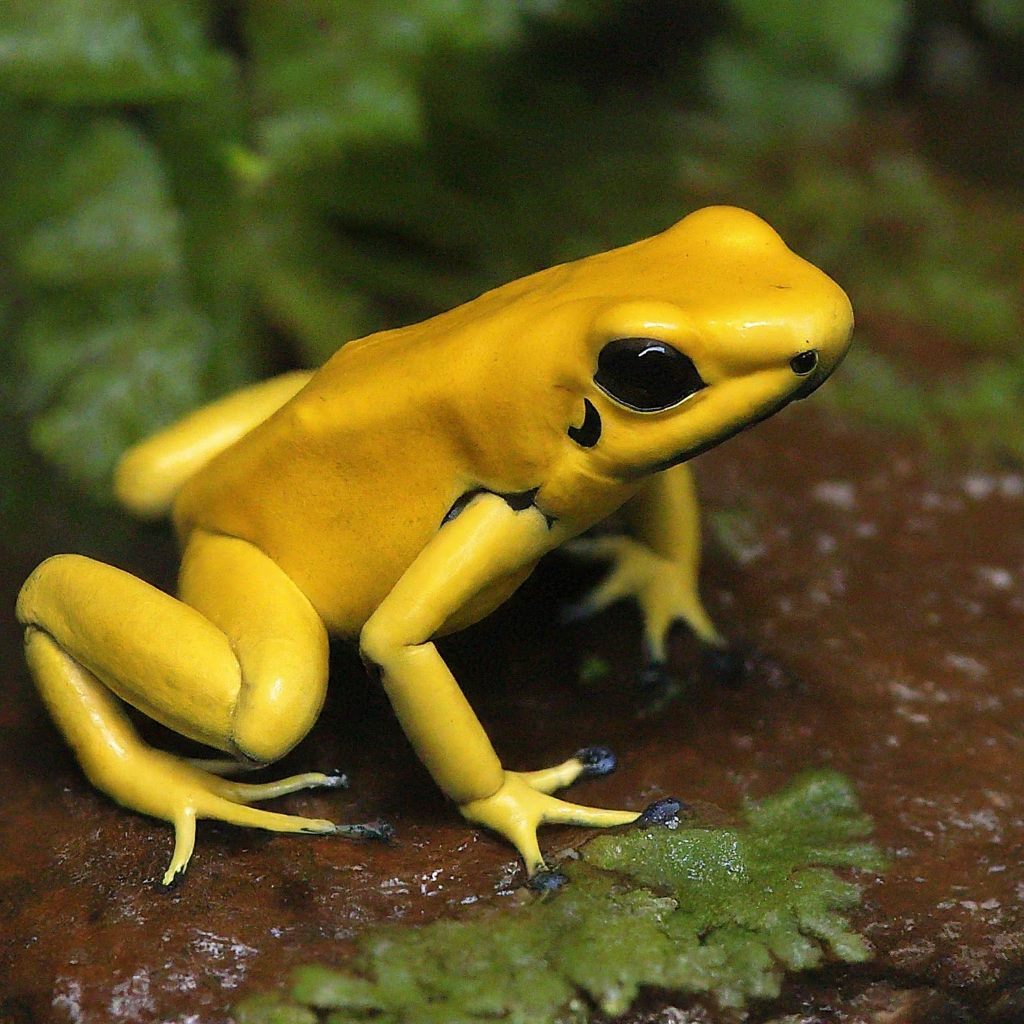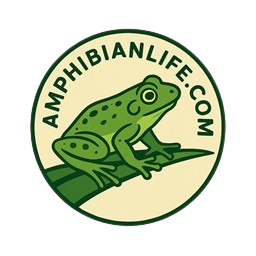
First of all, I’m not a frog expert. There are numerous good web pages available with information about dart frogs; so make sure to refer them as well. My purpose here is to present information that I have encountered, but have not seen covered on other web pages.
Captive bred tadpoles are the best option to start with as a beginner. So, how to take care of tadpoles?
Further discussed in detail about every aspect of tadpoles care from breeding to caring and a comprehensive tadpole care sheet to help you out. let us begin with what exactly is a poison dart frog? and the safety measures while keeping them.
What is a Poison Dart Frog?
First, what is a “Poison Dart Frog”? This term is used to describe the colorful frogs of the family Dendrobatidae. These frogs, like many other amphibians, secrete toxins from their skin.
Are dart frogs dangerous pets?
The frog that gave this group of frogs its name is the Golden Poison Dart frog (Phyllobates terribilis).
The Choco’ Indians of Pacific river areas of Colombia use the secretion from the back of Phyllobates terribilis to coat their darts with poison. This is done by rubbing the tip of the dart along the back of the frog.
What is the most poisonous frog on earth?
Golden Poison Dart frog, When the frog is agitated it will secrete a poison from the pores on its back.
This toxin is non-protein-based (alkaloids) and one frog may have enough toxin to provide a lethal dose to 10 adult humans.
This makes Phyllobates terribilis the most toxic animal in the world that has a non-protein based toxin.

Now, why would any one want to keep an animal that could potentially kill them?
First, most of the frogs of this group are not poisonous enough to be a threat to humans. Only 3 species could cause a serious threat, and they are: Phyllobates terribilis, Phyllobates bicolor, and Phyllobates aurotaenia.
Are dart frogs poisonous in captivity?
Most of the frogs would only cause a serious health risk if ingested. When the frogs are kept in captivity, they lose their toxicity.
The reason for this is not completely understood, but it is believed that the frogs obtain the alkaloids from the insects they eat and the insects obtain them from the plants they eat.
Since frogs do not have a alkaloids source in captivity, they cannot generate the toxins. But still, why do people keep these frogs? These are some of the most colorful and interesting animals in the world.
Not only are they colorful, such as green and black, blue and black, and yellow and black just to name a few, but each species has its own personalities.
How to Care for Dart Frog Eggs & Tadpoles
What kind of water do tadpoles need?
In their natural habitats, the rain forest, Dendrobatid tadpoles develop in water that is soft, yet acidic. I duplicate this by using RO (reverse osmosis) water and green moss.
I allow the water to stand for at least 24 hours so that any chlorine it may contain can evaporate.
Once you add the green moss you will notice that the water turns slightly brown, like a week tea.
If you do not have green moss available, you can experiment with dried leaves (oak, holly, bamboo, etc.).
If possible allow the water to “steep” for at least a week so that it has fully stabilized before the tadpoles are added.
How to raise Dart frog tadpoles?

How often do you change tadpole water?
When you receive a tadpole, you should be very careful about changing the water that it arrived in, with the water you have at your home.
Although there may be less risk if you are already using RO and green moss, I still suggest taking it slow, adding a small amount of your water at hourly intervals. adding a couple ounces of water every few hours.
Give the tadpoles time to adjust to the slight changes of the mixing waters, at least an hour.
On days that I am home all day I will add water at various intervals (when ever I remember, but at least hour).
Another method that I have heard about, but not used myself, is to allow water to drip into the container (a couple drips a minute should be okay).
Once you have doubled the original amount of water remove two-thirds of it (mix it back into your water container) and repeat the process. After that you should have successfully acclimated your tadpoles, just remember:
What to feed your Tadpoles? What is a tadpoles favorite food?
The main staples of my tadpoles’ diet are Spirulina and Chlorella algae.
That doesn’t mean flaked fish food with Spirulina or any other fish food products with these ingredients in their names.
The amount of actual algae’s in commercial fish foods is minuscule compared, even in the Spirulina named ones, to the amounts of fillers that they use.
Is it ok to feed spirulina and chlorella together?
The short answer is YES, Spirulina and Chlorella are available in nearby health food store, and they are comparatively expensive compared to the same volume of commercial fish food,
but you need to have your priorities straight if you want big (mine average 4 cm), healthy, tadpoles. Don’t pinch pennies when it comes to their food.
Is algae good for tadpoles?
The cost for both bottles of algae (100 capsules each) is same as the value of one froglet, and will last you for months.
If you can only get tablets then I suggest that you invest in a mortar and pestle.
Can Tadpoles eat spirulina?
If anyone tells you that they have tried Spirulina and it didn’t give good results,
Ask them if they used “Spirulina” fish food (there is probably more Spirulina in the name than in the bottle), or the REAL stuff from a health food store. I bet it was the fish food
Yes, 2 to 3 ml of spirulina suspension per 30 tadpoles daily is sufficient for them.
Note for Beginners: sufficient food supply prevents tadpoles from attacking each other.
if they are hungry their carnivorous nature make them feed on themselves you know fittest will survive.
Read More : How many eggs do frogs lay? (And why lay so many?)
Group Rearing of Tadpoles
D. auratus D. leucomelas D. tinctorius And, I would not hesitate to raise any other dedrobates that are closely, even D. Azureus, in groups either.
For the first few days I will keep a clutch together in a deli cup (give them a small amount of food immediately).
This allows me to observe them and also to concentrate their feeding.
After that, all that tadpoles that look good go into a temporary container for around 2 weeks.
The container can be just about anything, depending on the size of the clutch; plastic shoe boxes, old glass jars, plastic containers, etc.
Why do tadpoles cluster together?
Grouping or clustering is a protection mechanism tadpoles opt at the center of the spawn.
So the remains of the spawn create a barrier and protect them from predators.
Why do tadpoles swim in circles?
while when it is warm out there, helps them to swim faster and sometimes in a pattern similar to circles.
What plants are good for tadpoles?
However, the container has generous amounts of live aquatic plants (Hornwort, Moneywort, Elodea (anachris), Java moss, etc.) and is the aged water described earlier.
Clutch-mates will grow at about the same rate, and if there are not any larger tadpoles already present, and they will reach a length of 3 cm in about two weeks.
How often should I feed my tadpoles?
You must feed them regularly (at least once a day), but they will also be snacking on some of the aquatic plants (especially Java moss), to achieve this growth rate.
The water temperature should be between 78 to 85 degrees (for the above mentioned species), lower temperatures will slow, and higher will accelerate (and may cause deformities), growth.
When should I release tadpoles?
After the tadpoles have reached a size of about 3 cm. I transfer them to a community ten gallon tank with a sponge filter and lots of plants, but no gravel.
When they pop their front legs and have absorbed about two-thirds of their tails, pull them out and put them in a plastic shoe box, with a little water, and tilt it.
Place them in a small tank when they are froglets (no tail). Or, you can set up a rearing tank that has a shallow water reservoir and just drop them in it and they will come out when they are ready.
They will not eat until they have completely absorbed their tail, but put food in the tank early.
Conclusion
Everything stated above is just my opinion and happens to be what I have found works best for me.
I consistently produce tadpoles that measure approximately 4 cm in length by the time that they sprout rear legs and I am very happy with the size and plumpness of the froglets that they morph into.
I am completely open to new ideas and I hope that something I have stated above will be useful to you.
Please let me know if you have any questions or any methods that work for you that you would like to share.
For further reading
If you found this article helpful and you enjoyed reading it, Check some other related articles below.
Do you want to know about frog eggs? Here’s an article What Do Frog Eggs Look like (And Where Do They Keep Them)?
